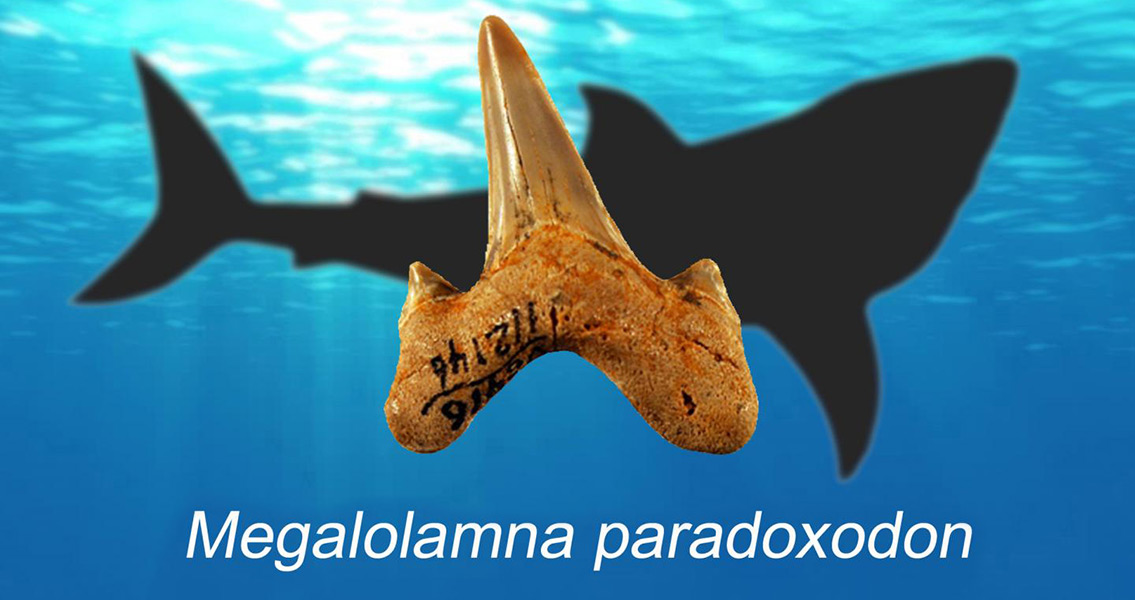<![CDATA[A relative of megalodon, the infamous, extinct megatoothed shark, has been identified by an international research team. The newly described shark, named Megalolamna paradoxodon, lived during the early Miocene epoch, some 20 million years ago. The long extinct creature belongs to a shark group called Lamniformes, which includes the modern day great white and mako sharks. Terrifying fossilised teeth, measuring up to 4.5 centimetres (1.8 inches) long, were the basis of the discovery. Megalolamna paradoxodon’s teeth have been found in California and North Carolina in the United States, as well as in Peru and Japan. Substantially smaller than members of the ‘megatoothed’ lineage, Megalolamna paradoxodon was still a formidable creature. At a minimum it was comparable in size to a modern great white shark, around four metres (thirteen feet) long. Living in the same oceans as the megatoothed sharks, Megalolamna paradoxodon likely feasted on small and medium sized fish, grasping its prey with its front teeth and slicing the unfortunate victim with its rear teeth. Megalolamna paradoxodon is a member of the Otodontidae family of sharks. Kenshu Shimada, a paleobiologist at DePaul University and research associate at the Sternberg Museum in Kansas, who led the study, said in a press release that the newly discovered fossilised shark is a “close cousin” of the megatoothed lineage that includes megalodon. The prehistoric shark’s name reflects ambiguities over its identification. Although certain dental features point to the otodontid affinity, superficially the teeth look close to those of a modern day salmon shark from the lamna genus – only much bigger. It is for this reason it has the name Megalolamna. Paradoxodon means paradoxical teeth. This is in reference to the fact the shark appears unexpectedly in the geologic record, with an as yet inexplicable 45 million year gap from when Megalolamna split with its apparent closest relative: Otodus. “It’s quite remarkable that such a large lamniform shark with such a global distribution had evaded recognition until now, especially because there are numerous Miocene localities where fossil shark teeth are well sampled,” said Shimada. Through their work on Megalolamna paradoxodon the team have also concluded that members of the megatoothed lineage, such as megalodon, should be reclassified from their traditional place in the Carcharocles genus to the Otodus genus. “The idea that megalodon and its close allies should be placed in Otodus is not new, but our study is the first of its kind that logically demonstrates the taxonomic proposition,” The Odotus lineage without megatoothed sharks would not constitute a full lineage, something scientists call ‘non-monophyletic’. By including megatoothed sharks however, Odotus becomes a monophyletic group, a complete lineage. This lineage is considered the next of kin to Megalolamna paradoxodon. The study has been published in the latest issue of the journal Historical Biology. Shimada, the lead author, worked alongside Richard Chandler, North Carolina State University; Otto Lok Tao Lam, The University of Hong Kong; Takeshi Tanaka, Japan; and David Ward, The Natural History Museum, London; to describe the prehistoric shark. For more information: tandfonline.com Image courtesy of Kenshu Shimada]]>
Frightening Megalodon and Great White Shark Relative Described
